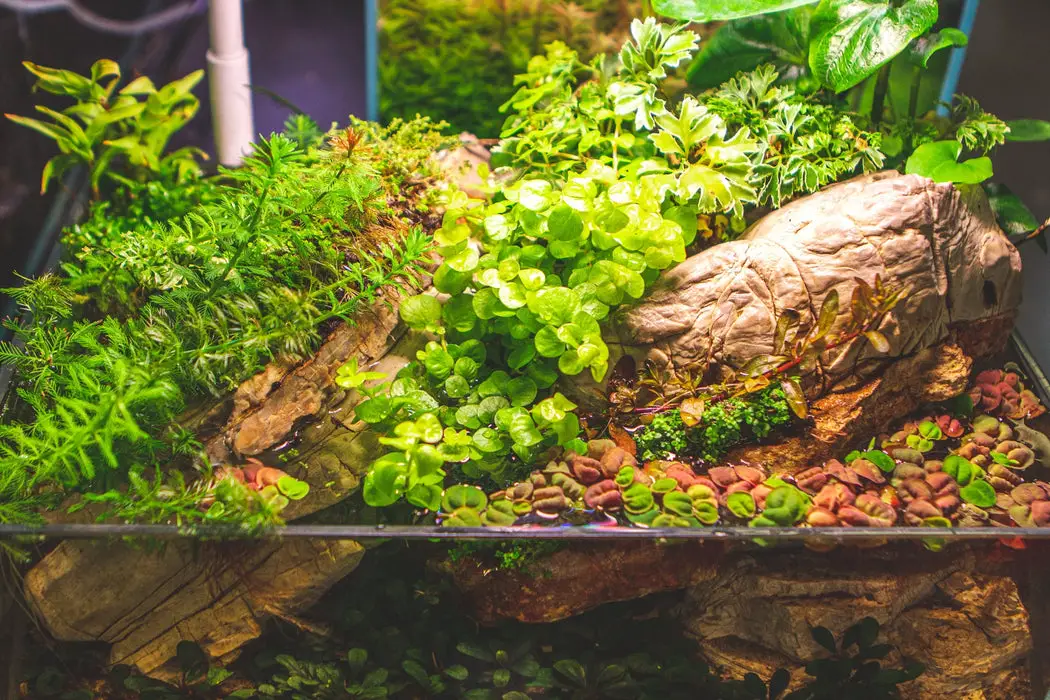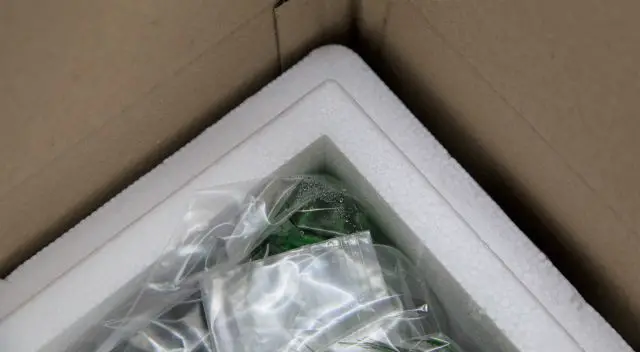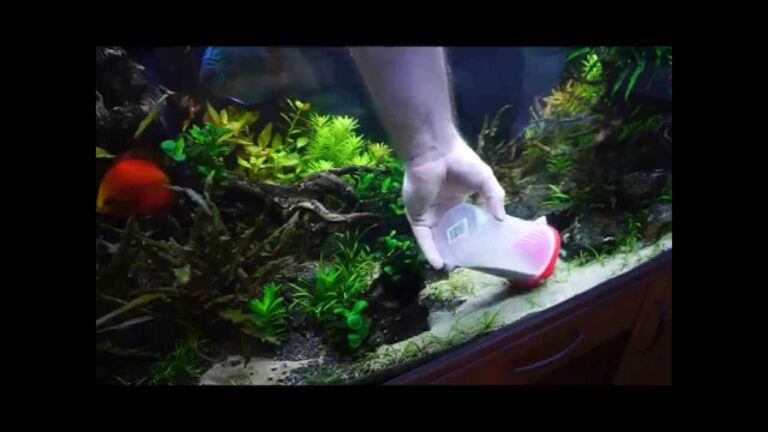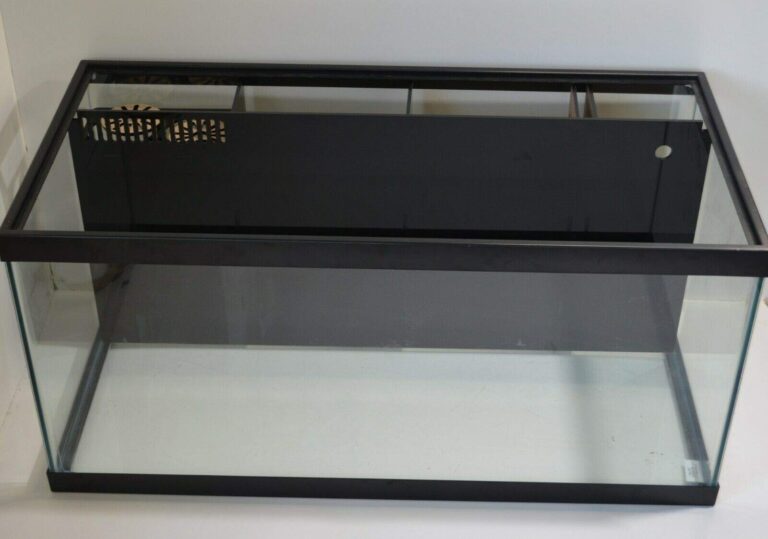Creeping Jenny Aquarium
Creeping Jenny (Lysimachia nummularia) is an aquatic plant that can be used to create beautiful aquariums. It grows in water up to two feet deep and has distinctive bright green leaves with round shapes. Creeping Jenny provides a natural, carpet-like look to the bottom of the tank, creating a lush environment for other fish and plants.
Its roots provide shelter and spawning areas for fish, while its foliage also adds oxygen into the water column. The small size of this plant makes it great for smaller tanks or as part of larger aquascapes. Care must be taken when handling Creeping Jenny since its stems are fragile and easy to break off from the root system if handled too roughly.
When introducing new specimens into an established aquarium, always quarantine them first before adding them to your tank; this will help prevent any potential diseases from spreading between plants in your tank!
Creeping Jenny is a popular aquatic plant for aquariums. Its bright green leaves create an attractive, vibrant effect that can easily be used to add texture, color and interest to any aquarium. With its easy growth and fast-spreading habits, it’s also a great choice for beginners who want to liven up their tank with minimal effort.
Best of all, Creeping Jenny is hardy enough to tolerate most water conditions so you don’t have worry too much about maintaining the right environment for this beautiful plant!
How to Plant Creeping Jenny in Aquarium
Planting Creeping Jenny in an aquarium is an easy way to add a splash of color and texture to your tank. To do so, begin by locating small pots or containers with drainage holes and filling them with nutrient-rich soil. Plant the Creeping Jenny cuttings into these containers and place them in your aquarium, making sure the roots are submerged in water.
Ensure that you provide enough light for proper growth – indirect sunlight is best – and make sure the temperature remains between 65°F – 77°F (18°C – 25°C). Finally, maintain a regular schedule of fertilizing every two weeks for maximum health benefits!
Creeping Jenny Aquarium Care
Creeping Jenny is a hardy, low-growing aquatic plant that can be used to provide your aquarium with both visual appeal and beneficial filtration. To ensure it thrives, Creeping Jenny should be placed in an area of the aquarium with medium lighting and plenty of space for its tendrils to spread out. Additionally, keep the water temperature between 70-80 degrees Fahrenheit and make sure the pH levels are between 6.5-7.5 for optimal growth.
Finally, fertilizing once every two weeks is recommended for best results.
Is Creeping Jenny Toxic to Fish
Creeping Jenny (Lysimachia nummularia) is an aquatic plant that can be found in ponds and aquariums. While it is not toxic to fish, if ingested in large quantities it can cause digestive problems for your fish due to its high oxalic acid content. It’s best to keep the quantity of Creeping Jenny in your tank or pond low, as this will ensure that your fish are safe from any potential health issues.
How to Grow Creeping Jenny in Water
Creeping Jenny (Lysimachia nummularia) is one of the most popular water garden plants. It grows best in shallow, still waters such as ponds and aquariums, but can also be grown in a container full of purified or distilled water. To grow Creeping Jenny successfully, it’s important to keep the plant well-watered at all times and provide plenty of light for optimal growth.
The creeping stems should be pruned regularly to encourage new growth and you’ll need to change out the water every few weeks to prevent algae build up. With proper care, you can enjoy thick mats of bright green leaves that will add color and texture to your aquatic display!
Lobelia Cardinalis Aquarium
Lobelia cardinalis, also known as the cardinal flower or giant blue lobelia, is an attractive and popular aquarium plant that adds a unique touch of color to any freshwater tank. Its bright red flowers stand out against contrasting green foliage, creating a stunning display when viewed from above. This hardy plant requires minimal maintenance, with regular trimming and pruning being its only real demands for healthy growth.
When given sufficient light levels and nutrient-rich waters, Lobelia cardinalis can be an excellent addition to any aquascape.
Hygrophila Pinnatifida
Hygrophila Pinnatifida is a popular species of aquatic plant among aquarium hobbyists. It has long, finely divided leaves and grows in an upright pattern when established. This plant can tolerate a range of water parameters, but it does best with medium light levels and regular fertilization to promote healthy growth.
Additionally, its rhizome runners can be used to propagate the species easily within an aquarium setup.
Pogostemon Erectus
Pogostemon Erectus, commonly known as Brazilian Pennywort, is an aquatic plant found in tropical and subtropical regions of the world. This perennial herb can grow up to 15cm tall and has long stems that are covered with thick dark green oval leaves. It’s a popular choice for aquascaping aquariums due to its attractive foliage and hardiness.
Pogostemon Erectus also provides oxygenation through photosynthesis, making it beneficial for both fish and other plants living in the same environment.
Staurogyne Repens
Staurogyne Repens is an aquatic plant native to tropical regions of Central and South America. This hardy plant features bright green leaves with a reddish-brown hue at the base, making it a favorite among aquarists looking for a stunning accent in their aquariums. Staurogyne Repens is also known as “dwarf hygrophila” because of its small stature; they often reach heights of only 4 inches or so when fully grown.
With regular trimming and pruning, this plant can be kept low enough to make it suitable for smaller tanks and nano aquariums.

Credit: www.youtube.com
Is Creeping Jenny a Good Aquarium Plant?
Creeping Jenny (Lysimachia nummularia) is a popular aquarium plant due to its hardiness and ease of care. It has small, round leaves that grow in dense mats on long stems that can spread rapidly when given the right conditions. Its bright green foliage makes it an attractive addition to any planted tank.
This plant thrives in moderate lighting and soft acidic soil with plenty of nutrients, but will also tolerate lower light levels and higher pH values if necessary. Creeping Jenny is easy to propagate by cutting off sections of stem which can then be replanted elsewhere in the tank for even more coverage. The low-growing nature of this species makes it ideal for carpeting foreground areas or creating midground features such as ‘hills’ or mounds at its base – just make sure to keep a close eye on how quickly it spreads!
Overall, Creeping Jenny is an excellent choice for aquarists looking for an easy-care yet aesthetically pleasing aquarium plant.
Is Creeping Jenny Safe for Aquariums?
Creeping Jenny, also known as Lysimachia nummularia, is a popular plant choice for aquariums and ponds. It’s an easy-to-care-for and fast-growing plant that adds texture to the aquarium while providing food and shelter for fish. But many aquarists wonder if it’s safe to keep in their tanks.
The answer is yes! Creeping Jenny is non-toxic and generally considered a safe aquatic species for most types of tanks. Its roots are strong enough to keep its leaves from floating away, but not so aggressive that they take over other plants or cause damage to the tank’s substrate.
As long as you provide adequate lighting and prune regularly, this hardy plant can be enjoyed by both novice and experienced aquarists alike!
Can Creeping Jenny Be an Aquatic Plant?
Creeping Jenny, or Lysimachia nummularia, is a low-growing perennial garden plant native to Europe and Asia. It has bright green leaves that form a dense mat of foliage, making it an attractive ground cover. While some people believe that Creeping Jenny can be grown as an aquatic plant in ponds and water gardens, this is not true.
The roots of the plant are very shallow and don’t have the ability to absorb enough water from deep below the surface soil; therefore they would quickly dry out in a pond environment. Additionally, because its foliage grows in such a dense mat on top of the soil’s surface, Creeping Jenny does not provide much shade for plants beneath it which need filtered sunlight to survive in aquatic environments. As lovely as Creeping Jenny may be when planted around your home landscape or patio area, it will not thrive if placed directly into standing water such as found in ponds and aquariums.
Can You Put Creeping Charlie in a Fish Tank?
Yes, you can put creeping Charlie in a fish tank. This fast-growing plant is an excellent choice for aquarists looking to add some visual interest and texture to their aquarium. It grows quickly and has low maintenance requirements – perfect for busy hobbyists!
Plus, its bright green foliage provides cover for shy or reclusive fish while adding another layer of beauty and color to your tank. Creeping Charlie is also a great oxygenator, helping keep the water clean and fresh by absorbing carbon dioxide from the water and releasing oxygen instead. When placed in shallow areas of your aquarium, it can help reduce algae growth too!
Just make sure that you keep your aquarium’s pH level stable so that the plants are healthy enough to provide benefits like these.
Can Creeping Jenny Grow in Terrarium?
Creeping Jenny (Lysimachia nummularia) is a low-growing, evergreen groundcover that can be grown in terrariums. It is an ideal plant for those who want to add variegated foliage and color to the terrarium. Creeping Jenny grows best in moist soil and partial shade, so it should be placed near the back of the terrarium where it will receive bright indirect light but not direct sun.
The soil should also remain constantly moist but not soggy as this could lead to root rot or other issues. In addition, make sure there is adequate drainage at the bottom of your terrarium and that any excess water can easily escape from the container. Fertilize lightly with a balanced all-purpose fertilizer every few weeks during periods of active growth and prune off any dead leaves or stems if necessary.
With proper care, Creeping Jenny can provide year-round beauty for your indoor garden!
Aquarium Plants: Creeping Jenny
Conclusion
Overall, Creeping Jenny is an ideal aquarium plant that can be used to add greenery and color to any tank. Its easy maintenance and ability to adapt to various conditions make it a popular choice for aquarists. It’s also a great way to introduce oxygen into the water, which helps keep the ecosystem healthy.
With its unique look and vibrant colors, Creeping Jenny adds an attractive touch of nature to your fish tank that will last for years!






